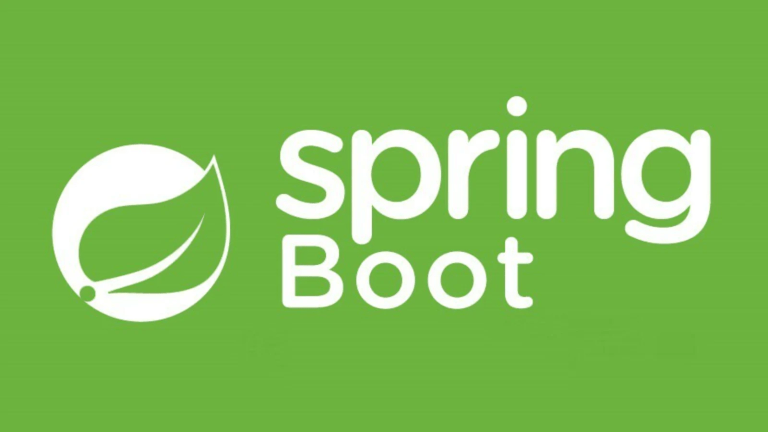Implement Spring Boot + JPA Infinite Scrolling (Mobile/API-Ready)
Infinite scrolling has become a staple for modern applications, particularly in mobile user experiences. Unlike traditional pagination, where users explicitly move between pages of content, infinite scrolling dynamically fetches additional data as users interact with the app. This technique optimizes performance and enhances user engagement.
This guide explores how to implement infinite scrolling in Spring Boot with JPA, highlighting the importance of limit-offset queries, handling next-page cursors, providing API examples, and structuring frontend responses for seamless integration.
Table of Contents
- Traditional Paging vs. Infinite Scroll
- Implementing Limit-Offset Using @Query
- Handling Next-Page Cursor or Offset
- API Example: /posts?offset=20&limit=10
- Frontend-Friendly Response Structure
- Optional: React/Angular Demo Integration
Traditional Paging vs. Infinite Scroll
Traditional Paging
Traditional pagination divides datasets into discrete pages. Clients explicitly request a specific page defined by query parameters such as page and size. For instance:
GET /posts?page=1&size=10
- Advantages:
- Simple implementation.
- Well-suited for static datasets or tabular UI presentations.
- Disadvantages:
- Requires reloading the entire page.
- Less intuitive for mobile users.
Infinite Scrolling
Infinite scrolling dynamically retrieves more data as users interact with an app (e.g., scrolling down). Instead of pages, it often relies on:
- Limit and Offset parameters to fetch data chunks.
- Cursors for referencing the “next” portion of data in datasets that may change during user interaction.
- Advantages:
- Seamless user experience, particularly for mobile or social media-like feeds.
- Reduces the barrier to browsing extensive datasets.
- Disadvantages:
- May require additional complexity for handling dynamic datasets or backend performance optimizations.
Implementing Limit-Offset Using @Query
To implement infinite scrolling in Spring Boot with Spring Data JPA, take advantage of SQL’s LIMIT and OFFSET. These clauses allow fetching a specific number of rows (limit) and skipping a certain number of rows (offset).
Define the Entity
Create an entity class, for example, Post:
@Entity
public class Post {
@Id
@GeneratedValue(strategy = GenerationType.IDENTITY)
private Long id;
private String title;
private String content;
private Timestamp createdAt;
// Getters and Setters
}
Repository with Native Query
Use a custom query in the repository to implement limit-offset functionality:
public interface PostRepository extends JpaRepository<Post, Long> {
@Query(value = "SELECT * FROM post ORDER BY created_at DESC LIMIT :limit OFFSET :offset", nativeQuery = true)
List<Post> findPostsWithPagination(@Param("limit") int limit, @Param("offset") int offset);
}
Here:
LIMITfetches the requested number of records.OFFSETskips the specified number of rows to simulate navigation.
Service Example
The service layer can encapsulate the repository logic:
@Service
public class PostService {
@Autowired
private PostRepository postRepository;
public List<Post> getPosts(int limit, int offset) {
return postRepository.findPostsWithPagination(limit, offset);
}
}
Handling Next-Page Cursor or Offset
Infinite scrolling requires a mechanism to fetch subsequent results. The offset is an intuitive choice but may fail when the underlying dataset changes frequently (e.g., insertions or deletions). Cursors offer a better alternative for dynamic cases.
Offset-Based Approach
Return the next offset for the subsequent API call:
@GetMapping("/posts")
public Map<String, Object> getPosts(
@RequestParam int limit,
@RequestParam int offset) {
List<Post> posts = postService.getPosts(limit, offset);
Map<String, Object> response = new HashMap<>();
response.put("data", posts);
response.put("nextOffset", offset + limit);
return response;
}
Sample API Request:
GET /posts?offset=20&limit=10
Response:
{
"data": [...],
"nextOffset": 30
}
Cursor-Based Approach (Dynamic)
For datasets that frequently change (e.g., social feeds), cursors are more reliable. A cursor is typically a unique identifier (e.g., id or createdAt timestamp).
Repository for Cursors
@Query(value = "SELECT * FROM post WHERE created_at < :cursor ORDER BY created_at DESC LIMIT :limit", nativeQuery = true)<br>List<Post> findPostsBeforeCursor(@Param("cursor") Timestamp cursor, @Param("limit") int limit);<br>Controller:
@GetMapping("/posts")
public Map<String, Object> getPosts(
@RequestParam int limit,
@RequestParam(required = false) Timestamp cursor) {
Timestamp effectiveCursor = cursor != null ? cursor : new Timestamp(System.currentTimeMillis());
List<Post> posts = postRepository.findPostsBeforeCursor(effectiveCursor, limit);
Map<String, Object> response = new HashMap<>();
response.put("data", posts);
response.put("nextCursor", posts.isEmpty() ? null : posts.get(posts.size() - 1).getCreatedAt());
return response;
}
Sample request:
GET /posts?limit=10&cursor=2023-01-01T12:00:00
API Example: /posts?offset=20&limit=10
Here’s a full API example demonstrating the offset-based approach:
Sample Controller:
@RestController
@RequestMapping("/posts")
public class PostController {
@Autowired
private PostService postService;
@GetMapping
public Map<String, Object> getPaginatedPosts(
@RequestParam int limit,
@RequestParam int offset) {
List<Post> posts = postService.getPosts(limit, offset);
Map<String, Object> response = new HashMap<>();
response.put("results", posts);
response.put("count", posts.size());
response.put("nextOffset", posts.isEmpty() ? null : offset + limit);
return response;
}
}
Sample Request:
GET /posts?offset=20&limit=10
Sample Response:
{
"results": [
{ "id": 21, "title": "Post 21", "content": "..." },
{ "id": 22, "title": "Post 22", "content": "..." }
],
"count": 2,
"nextOffset": 30
}
Frontend-Friendly Response Structure
For frontend integration, ensure your API returns:
- Data for rendering (e.g., an array of posts).
- Next Page Information (cursor/offset).
Sample JSON for frontend:
{
"data": [
{ "id": 1, "title": "Title A", "content": "..." },
{ "id": 2, "title": "Title B", "content": "..." }
],
"nextOffset": 21,
"hasMore": true
}
The hasMore flag is optional but helps clients determine whether to disable further requests.
Optional: React/Angular Demo Integration
React Example
Use useEffect for API calls and setState to append new data for infinite scrolling:
const [posts, setPosts] = useState([]);
const [offset, setOffset] = useState(0);
const fetchPosts = async () => {
const response = await fetch(`/posts?offset=${offset}&limit=10`);
const data = await response.json();
setPosts([...posts, ...data.results]);
setOffset(data.nextOffset);
};
useEffect(() => fetchPosts(), []);
Trigger fetchPosts on scroll events or at the end of the list.
Angular Example
Use HttpClient for API integration, appending data with concat:
this.http.get(`/posts?offset=${this.offset}&limit=10`).subscribe((response) => {
this.posts = this.posts.concat(response.results);
this.offset = response.nextOffset;
});
Final Thoughts
Infinite scrolling with Spring Boot and JPA requires balancing backend efficiency, user experience, and dataset size. By using limit-offset queries, or advanced cursor-based solutions, you can create responsive APIs tailored for modern applications. With the right response structure and frontend integration, your infinite scrolling implementation will provide a seamless user experience across devices. Start building, and take your apps to the next level!




